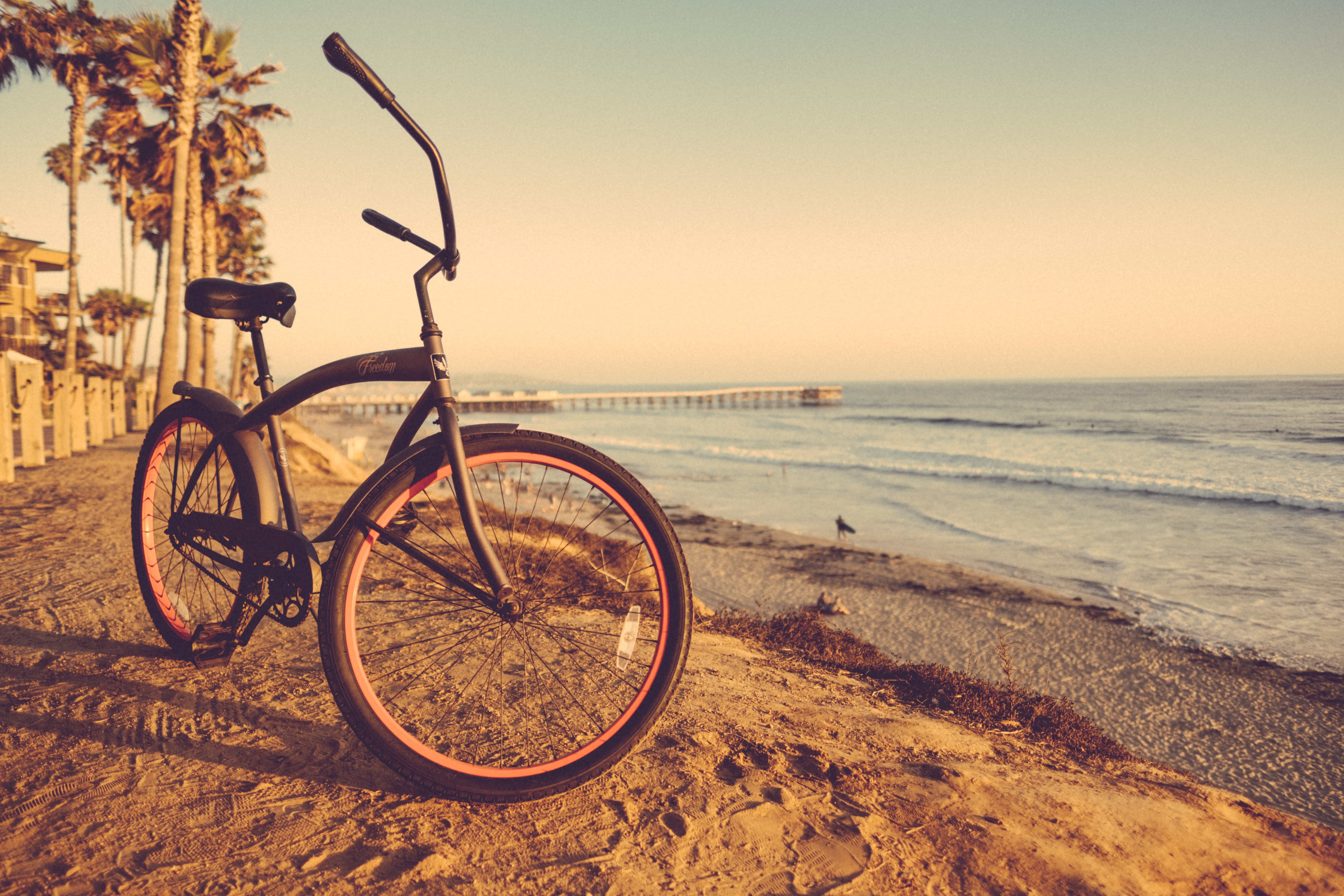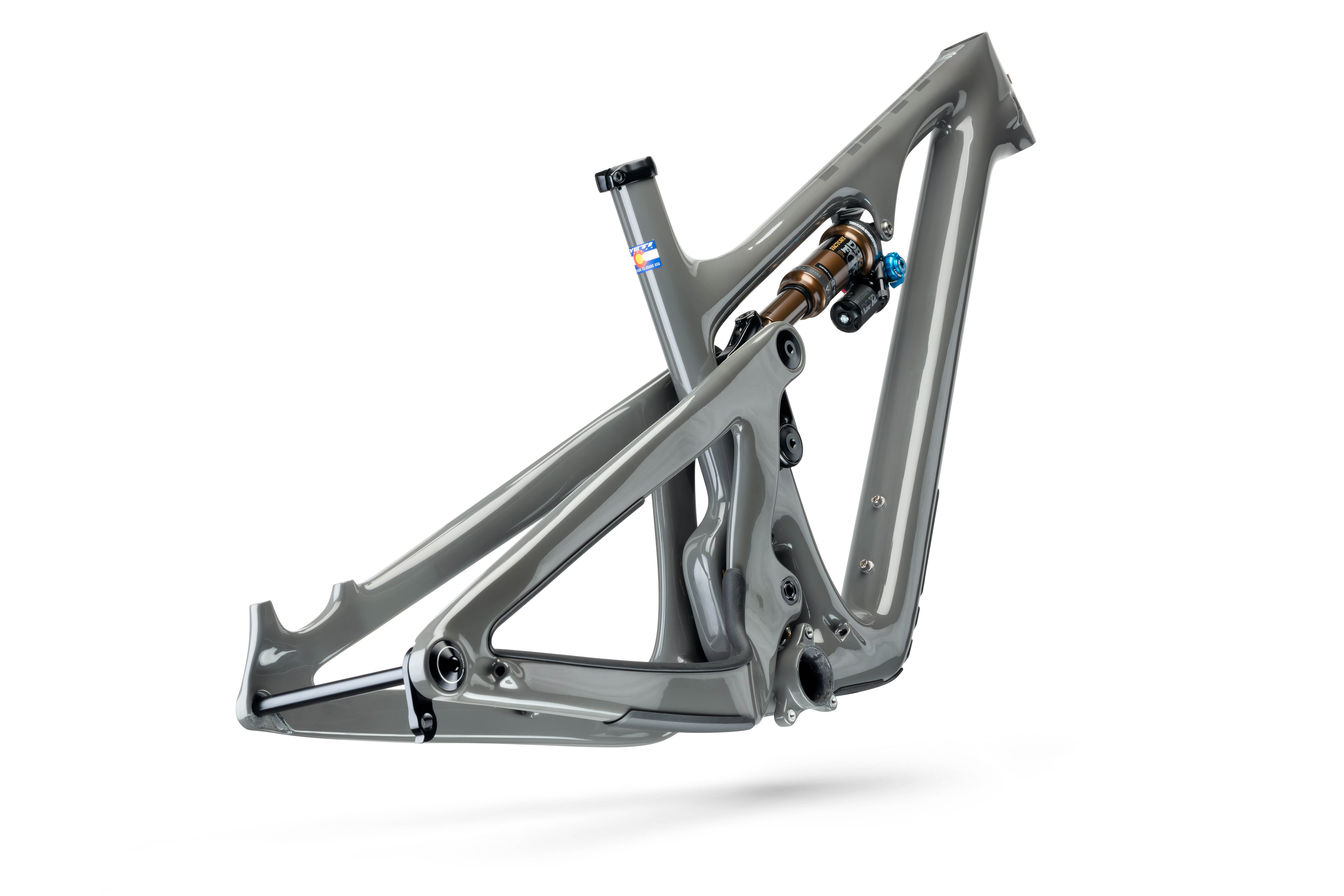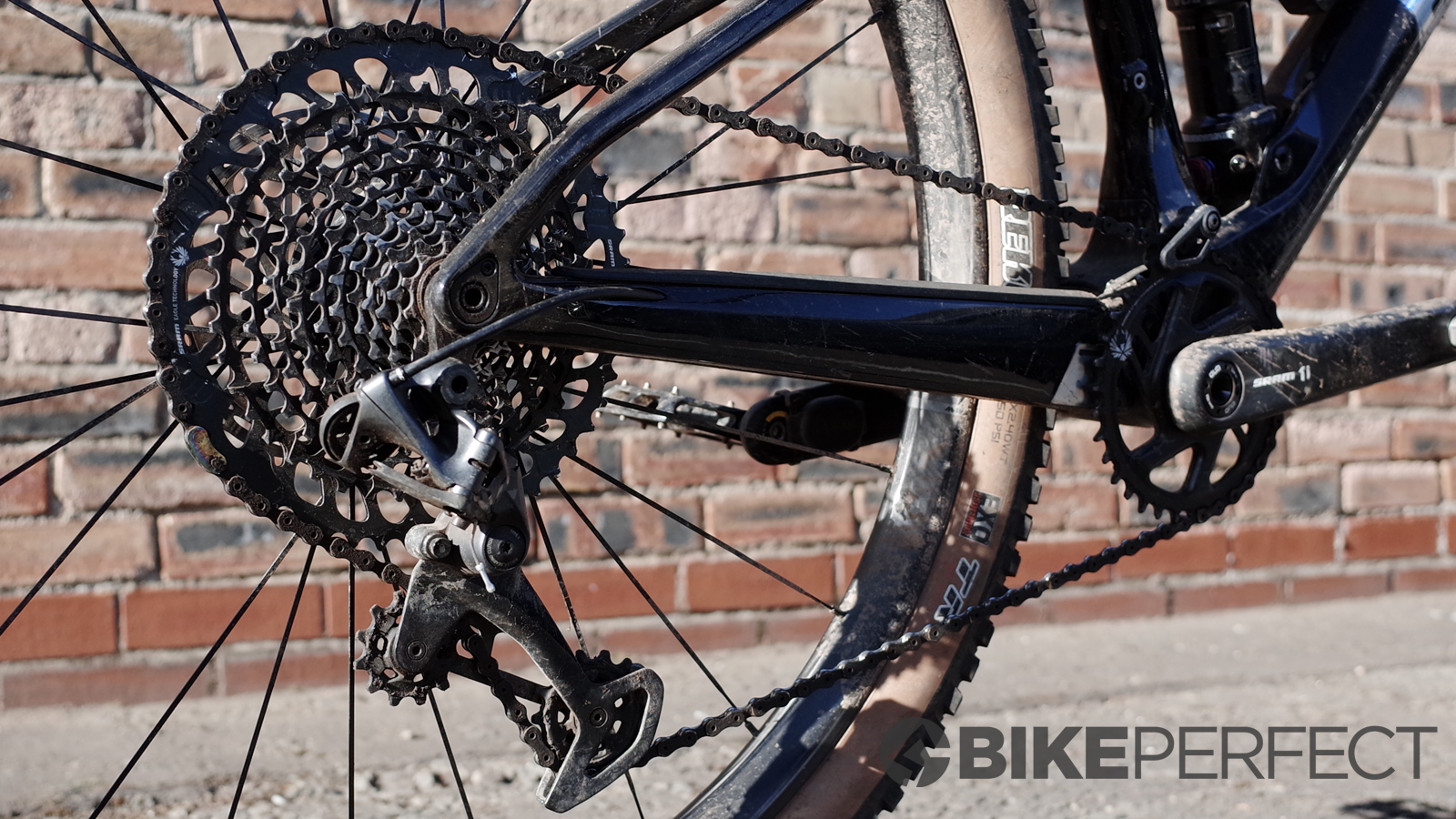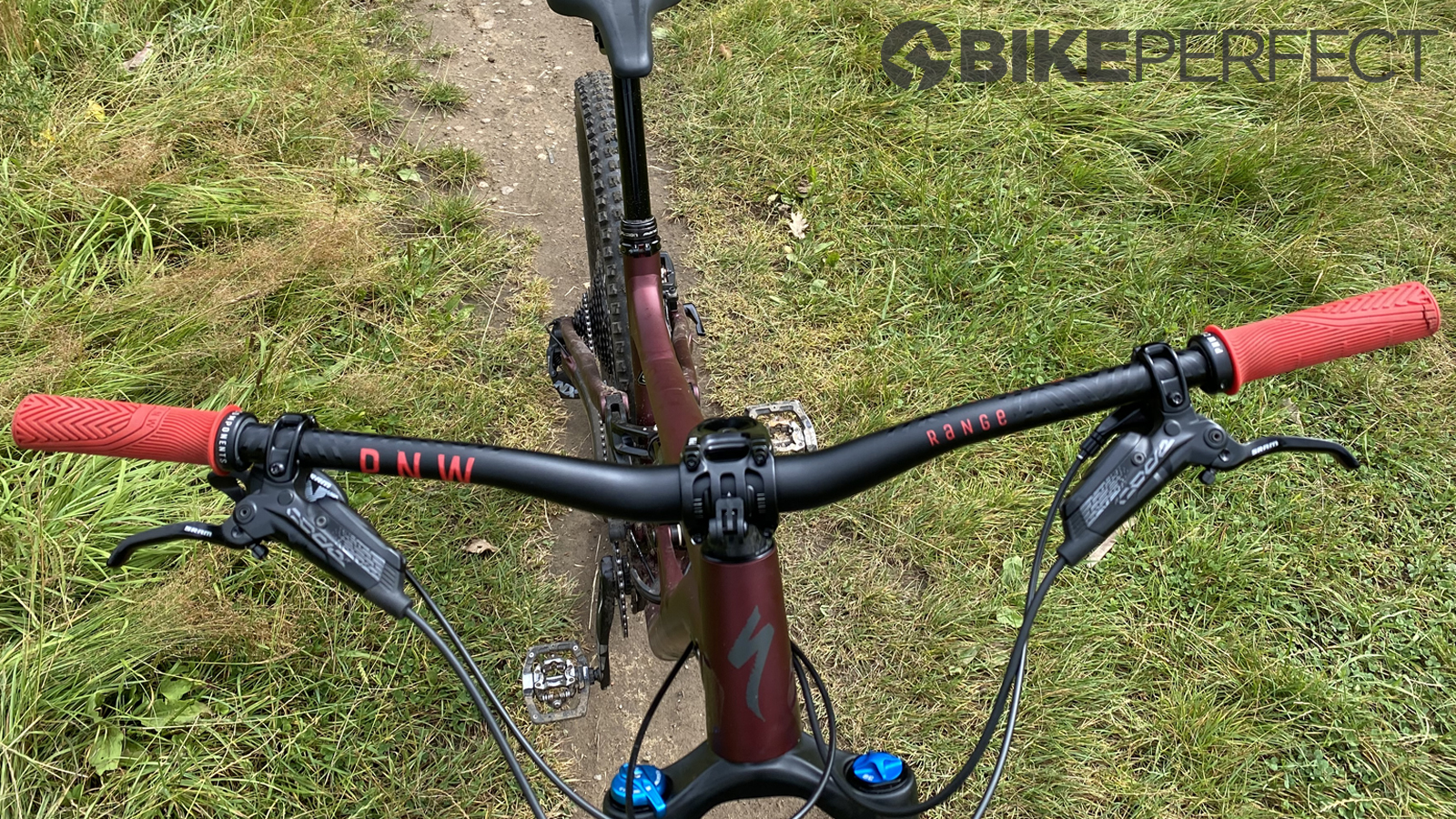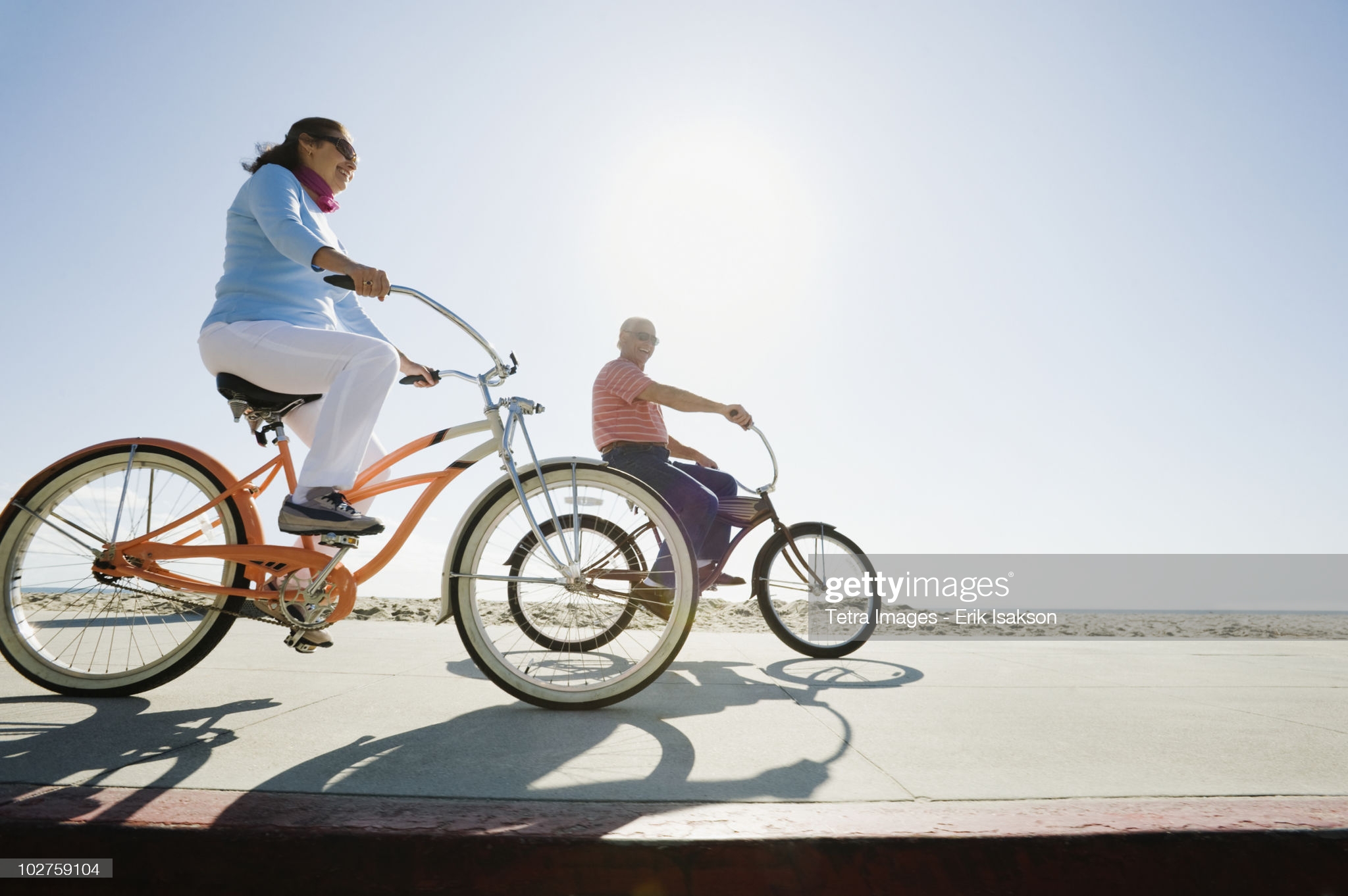Mountain bike vs cruiser: Understanding the differences
Explaining two styles of bikes built for very different uses

There isn’t much overlap between the worlds of mountain biking and cruiser riding, although if you trace the lineage back to the first mountain bikes, many were developed from modified cruiser designs. A lot has changed since Gary Fisher and Joe Breeze raced their 'clunkers' down repack in the 70s - now mountain bikes have become versatile off-road terrain machines, capable of tackling all types of mountain bike trail. Cruisers, on the other hand, have changed very little and are what you might see being ridden by a couple at the beach, or down to the grocery store with a basket on the front.
Both bikes could hardly have a more different clientele, but there are a number of interesting similarities in their frame designs and styles. In this mountain bike vs cruisers article, we’ll explain both the similarities and differences and help you decide which bike is best for you.
What is a mountain bike and a cruiser?
Mountain bikes are designed for off-road riding. Their frame geometry, suspension, and knobby tires are not meant for tarmac. Instead, the gnarly shapes of mountain bikes are meant for dirt, mud, gravel, sand, rocks, roots, and more. Mountain bikes are more capable and versatile than gravel bikes which are also designed for off-road riding. The biggest differences are in the frame, suspension and handlebars; but we’ll dive into those details in a second.
Cruisers are designed to be ridden around town – and that’s about it. They are not meant for off-road riding, not even soft dirt trails. Handling is near the bottom of its priority list, while comfort and ease of use are at the top. The simple frames are designed to be extremely low maintenance so that a family who knows nothing about bikes could own a flock and not need to fix them for years. While cruisers are one of the least versatile bike styles out there, they are still extremely popular. Cruisers don’t feel like a workout, and you don’t need to see a specialist to get fit on one, or ride in a special kit just to be comfortable – with a cruiser, you can just hop on and ride.
While the goals of mountain bikes and cruisers could not be more different – apart from maybe BMX bikes and cruisers – they share a number of similarities in their frame designs and technology, which means they’re a lot more alike on the inside than out.
Wheels and tires
Mountain bikes have wheels and tires designed to be both lightweight and durable, and to handle rough terrain while also feeling damped and sticky in corners. With massive tire clearances that allow for >48mm wide tires, mountain bikes accommodate a huge range of knobby tires designed for off-road riding. These tires are thicker than comparable road or gravel tires, and the best mountain bike tires may include puncture-protected sidewalls for the rough and technical trails.
As we’ve learned, cruisers are meant for smooth and paved terrain, not off-road riding. Because of this, cruisers have slick tires that are faster and more comfortable on tarmac. However, cruisers tend to have fairly wide tires which are puncture-resistant and help increase overall comfort. The main reason for this is that cruisers are not meant for speed or handling, and so putting a skinnier or lighter tire on them would only be increasing the risk of getting a flat or experiencing an uncomfortable ride. When you’re cruising to the grocery store, you won’t mind having slightly larger and heavier tires if they can almost guarantee that you won’t get a flat.
Frame geometry
Both mountain bikes and cruisers have more relaxed frame geometry that creates an upright riding position, although the former’s is less than the latter. Mountain bike frame geometry is designed for good handling over rough and technical terrain, which means a longer reach and slacker head angle. These two factors help mountain bikes handle better at higher speeds and maintain a rider's center of gravity on steep descents, respectively. Mountain bikes also have short stems and wide handlebars which improve handling and overall leverage.
Cruisers also have relaxed frame geometry – in fact, cruisers are about as relaxed as it gets. The wide handlebars are placed a little bit closer to the rider so that they can maintain an upright position rather than rounding their back, and the cushioned seat is fairly close to the stem. Cruisers also have a more relaxed seat-tube angle that is usually 2-5 degrees less than that of a road bike – this increases comfort but decreases efficiency, which is a theme throughout a cruiser bike. You’ll notice the differences in frame geometry right away in your more upright position, but even more so if you happen to tackle any hills or substantial distance.
Gears and brakes
Mountain bikes have a huge range of gearing options including giant cassettes and multiple choices for front ring combinations. Most modern-day mountain bikes come with a 1x set-up, which means having one front chainring, and a massive rear cassette such as a 10-48T. This means that you’ll be able to pedal at a comfortable cadence anywhere from 4mph up to 20mph. Some race set-ups have gears that you can pedal throughout an even bigger range, which is quite the feat for a single bike. Either way, you’re going to have a wide range of gearing on a mountain bike compared to a cruiser.
Cruisers are usually limited to one gear or speed – called a single-speed bike – which means that they are simultaneously convenient and annoying. Only having one gear is certainly a detriment if and when you encounter a hill, especially if you’re not comfortable pedaling at a low cadence or climbing out of the saddle. Even on slight downhill roads, you might find yourself spinning out, and craving just one more gear to keep the pedals comfortably turning.
However, single-speed bikes are super convenient and easy to maintain because there’s really no adjustment needed. There are no derailleurs on a single-speed bike, which means fewer parts to deal with, maintain, or replace. As the chain doesn't need to shift between gears, it's nearly impossible to drop your chain unless you crash. With no extra cables, housing, shifters, or barrel adjusters, the lack of gears on a cruiser is ideal for easy maintenance and first-time riders.
When it comes to brakes on mountain bikes, it’s simple: disc brakes. The best mountain bike brakes are big and powerful, designed to handle heavy braking loads, moderation, and all-weather performance. Disc brakes out-perform rim brakes in just about every performance category. The only catch is that disc brakes are more expensive than rim brakes, they can be harder to maintain, and some designs weigh more than comparable rim brakes. But for the purpose of mountain biking – to ride quickly on off-road trails, disc brakes are the way to go.
Most cruisers come with rim brakes instead of disc brakes, which means that they won’t perform as well, especially in the wet. However, cruisers are not meant for extreme riding – not even close. You’ll rarely be exceeding 20mph on a cruiser, and you probably won’t be weaving through traffic in the rain either. For its purposes – ‘cruising’ around the neighborhood and casual rides on bike paths – rim brakes are plenty strong to handle the job of stopping.
Suspension
There are two main categories of mountain bikes based on their suspension styles: hardtail and full suspension. Hardtail mountain bikes include suspension at the front, usually in the fork. This allows the suspension to compress when the front wheel hits a rock or bump, absorbing the impact instead of transferring straight into the rider’s arms.
Full suspension mountain bikes include suspension at both the front and rear of the frame, with the rear suspension helping compress the force at the rear wheel instead of transferring it to the rider’s saddle. This – along with dropper posts – helps mountain bikers tackle rough trails, as well as gnarly downhill trails, as the best full-suspension mountain bikes offer far superior traction and control.
Simply put, cruisers do not have suspension. Casual bikes with suspension are a category reserved for hybrids, not cruisers. Of course, there are some one-off companies that may put suspension on a cruiser, but as a whole, cruisers do not come with suspension. This means a potentially bumpier ride, but also less weight, maintenance and cost compared to a mountain bike.
Handlebars
Mountain bikes have flat or riser handlebars, which are bars that stick out to the left and right. Mountain bike handlebars may curve slightly backward (sweep) or up (rise) to increase ergonomics. Flat bars create a wider grip for the rider, which increases handling and helps with tight turns that you might experience on a mountain bike trail or descent.
Cruisers have a unique style of handlebar that is closer to flat bars than it is to drop bars (which we see on road and gravel bikes) but is still a style of its own. Most cruiser handlebars are bent into a shallow U-shape that allows the rider to control the bike while seated upright. This puts the wrists in a more natural position than flat bars and leaves room for a basket in front of the bars. However, you’ll have significantly more weight through your hands and wrists while riding a cruiser, which takes some getting used to. It is also very difficult to climb out of the saddle using these handlebars, but hopefully you won’t have to do any of that on a cruiser anyway.
Riding position
The flat bars and frame geometry of mountain bikes create a unique riding position balanced between power, handling, and aerodynamics. These bikes are designed for racing and descending, which means that you need to be comfortable both in the saddle and out of it. A mountain biker’s hands will be placed wide on the handlebars, while the overall frame design puts the rider in a fairly central position designed for handling in tight quarters.
The riding position on a cruiser is as lazy and comfortable as it gets before you buy a recumbent. You’ll be sitting almost upright on a cruiser, without the forward bend or arch in your lower back that you’d experience on a mountain bike or road bike. While a mountain bike position is considered “upright” compared to road riding, a cruiser’s position in even more upright than that. Designed for the masses, cruisers are meant to be as comfortable as possible, with a cushioned seat and wide handlebars that aren’t focused on handling like a mountain bike’s.
How to choose
Choosing between a mountain bike and a cruiser is simple, all you need to do is ask yourself: where do I want to ride?
Cost, aesthetics, and geometry aside, do you want to ride your bike on-road or off-road? If your answer is on-road, then you will probably want a cruiser. As long as the roads are flat and the riding is casual, a cruiser will be a wonderful choice.
If you want to head into the mountains, try out the dirt, or explore some new trails, then a mountain bike is the way to go. A gravel bike will be suitable for long-distance rides and tamer off-roads, while a mountain bike will be able to handle the widest range of terrain while also being comfortable and durable.
In addition to elite-level road, track and Zwift racing, Zach Nehr is a freelance writer and the head of ZNehr Coaching. He contributes written articles on a variety of cycling-related subjects, including product reviews and advertorials, as well as feature articles and power analyses. With a Bachelor’s Degree in Exercise Science from Marian University-Indianapolis, Zach spends his time working with endurance athletes of all ages and levels at ZNehr Coaching. Having entered the sport at age 17, Zach has had a successful racing career, winning the 2017 Collegiate National Time Trial Championships and a 9th place finish at the 2019 US Pro National Time Trial Championships. These days, Zach spends most of his ride time indoors, racing on RGT Cycling and competing in the Zwift Premier League with NeXT eSport.
